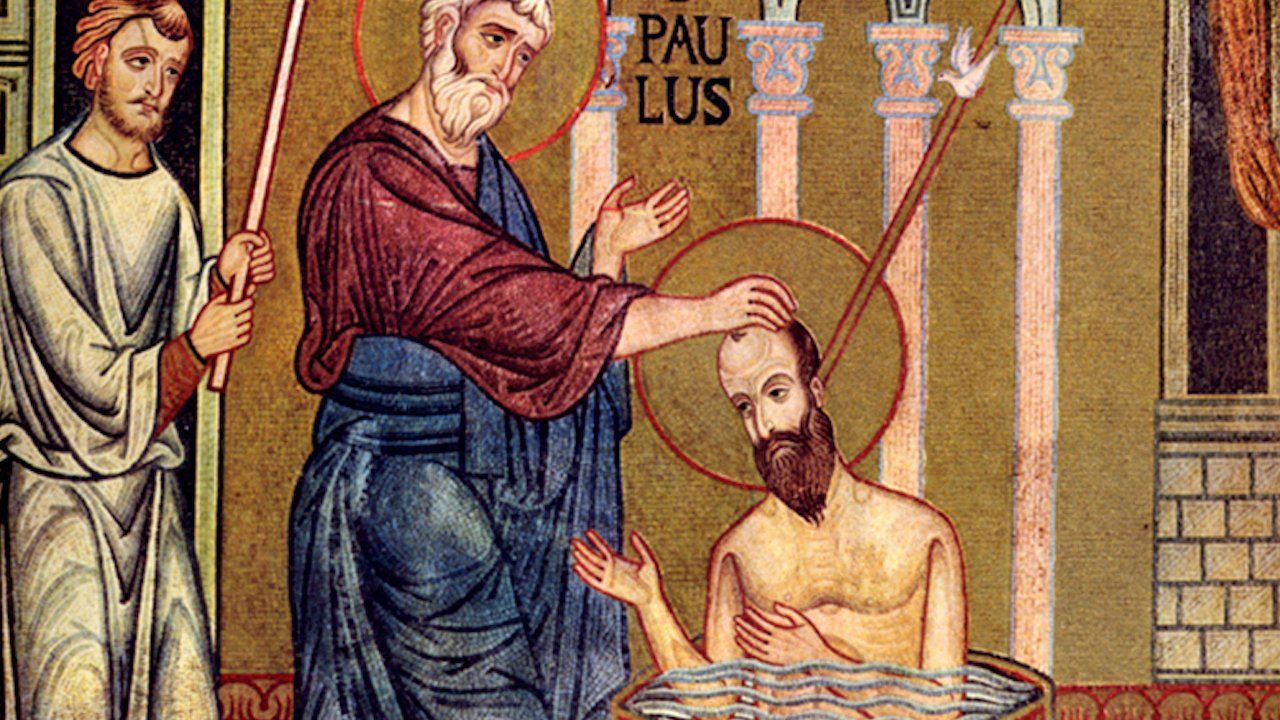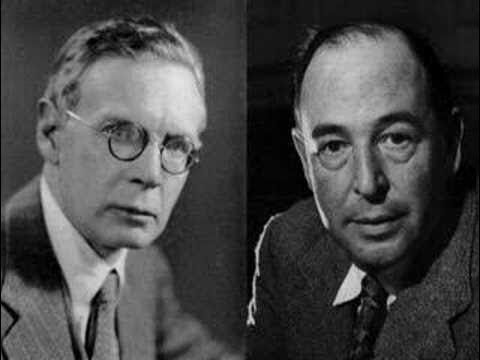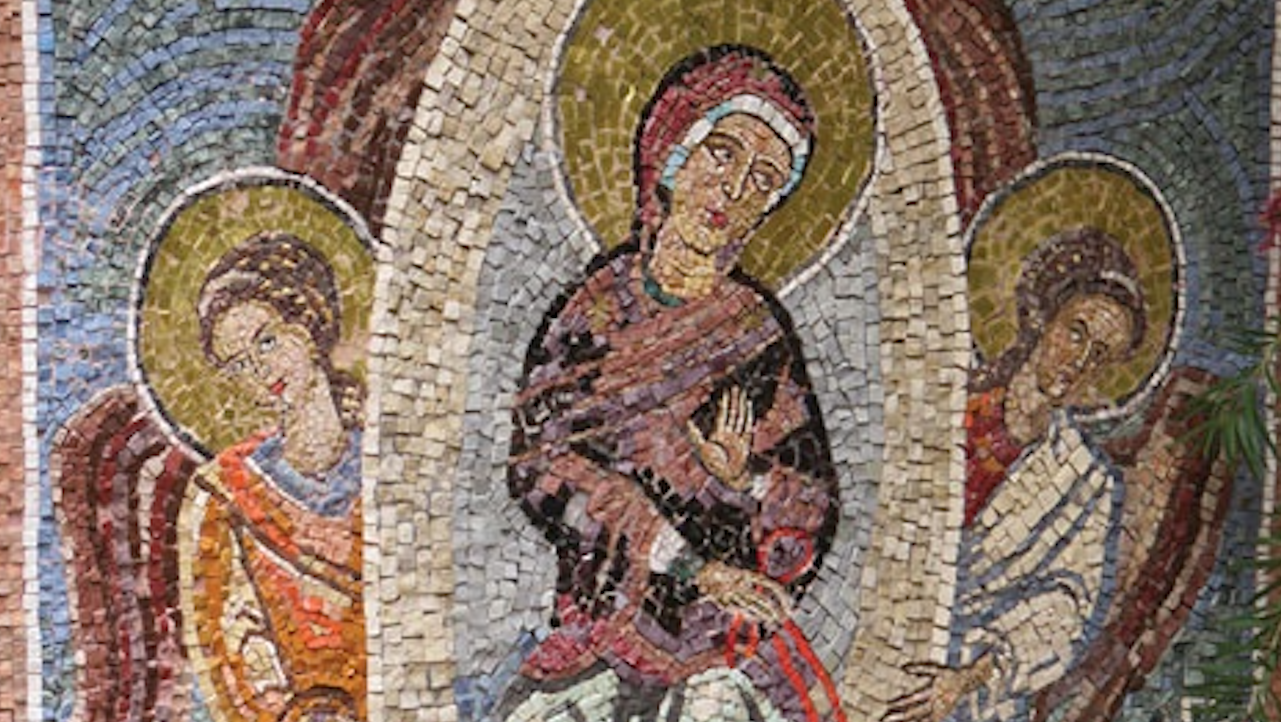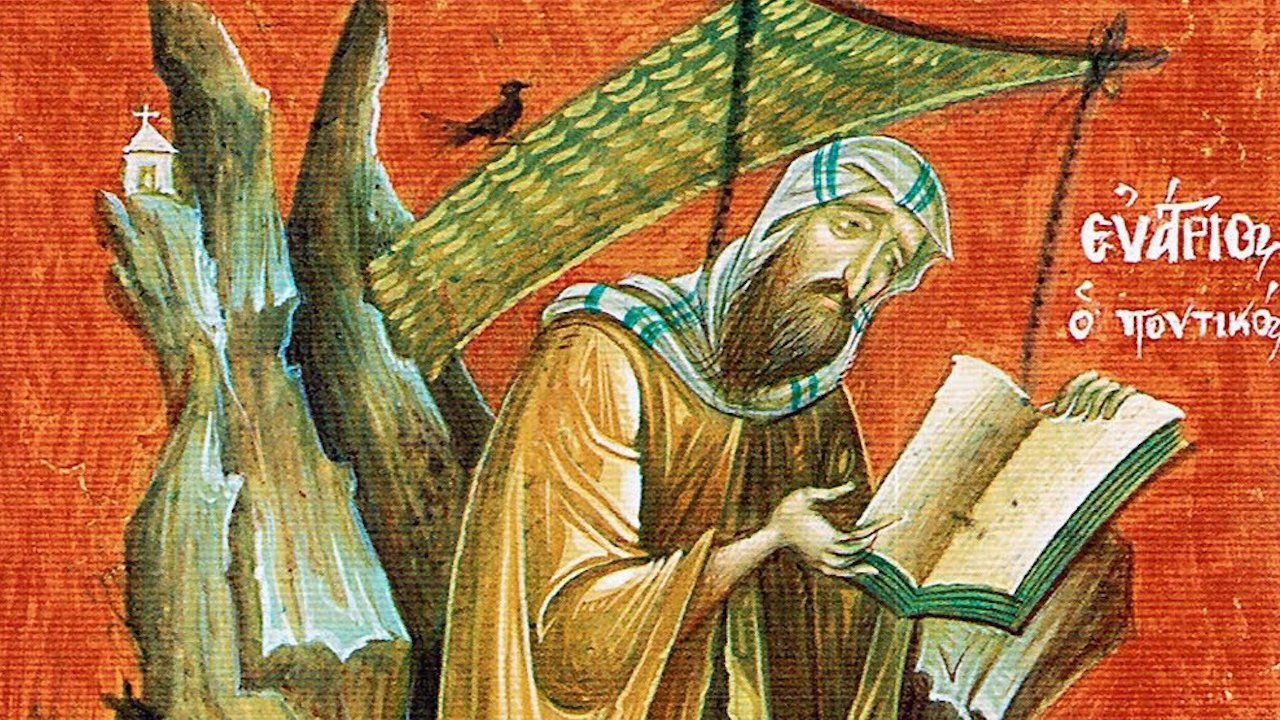The Dread Terror of Baptism
by Matthew Umbarger
Feast of St Macrina, Grandmother of St Basil the Great
Anno Domini 2021, May 30

Baptism of St Paul by Ananias of Damascus
Perhaps it was the summer of 1980. I know that I was extremely young, maybe five years old. We were still sitting in Thayer Christian Church’s old, white building on Main Street, the one that was torn down decades ago. The service had virtually ended. I was antsy and restless, because I knew that when we had sung a hymn after the sermon, I could usually get out of the pew and run around a bit. But this Sunday was different. An older child, a girl who was always kind to me, walked up the aisle. Now I was curious. What was she doing?
Our minister said a few words of explanation. The girl (Mary, we’ll call her) had been to church camp that week and had decided to make a commitment to become a Christian. This morning, Mary would be baptized. And then, our minister’s tone deepened, and he became grave as he pronounced: “In a few minutes, Mary will be buried with Christ in baptism. And when she comes up out of the water, she will be a new creation. The old Mary will be dead and gone.”
I was horrified. And yet, everyone around me seemed to be filled with joy. What madness was this? The kind, elderly folks in the pews all around me were beaming in anticipation of the murder about to take place. Even Mary was smiling. My mother tried to make sure that I could get a good view, but I wasn’t sure that I wanted to watch.
The dreadful minutes unfolded in all of the slowness that childhood temporality creeps. The congregation sang all four verses of a worn-out hymn. Mary had to change into her baptismal gown, of course. So I had time in which to grow more anxious. I squirmed and shivered. My head was sweating. I contemplated television heroics, intervening somehow to save Mary. I wanted to scream.
Finally, Mary reappeared at the front of the church, in the baptistry, as though emerging onto a stage for a surreal drama. Her father was with her. Her father! Would he, then,
be the instrument of Mary’s destruction? He was smiling. So was she.
He solicited her confession of faith. Yes, she believed that “Jesus is the Christ, the Son of the Living God.” And then he took her hands in his right hand, covered up her nose and mouth with them, and pushed her backwards into the water of the baptistry. I thought that she must drown in there. Hadn’t the preacher said something about “a watery grave”?
But then she was back up, smiling, and hugging her father. I was confused. She looked very much alive. Was it then no more than a bath? But everyone was behaving as though something very significant had just occurred.
In a few more years, I myself was ready to follow Mary into the baptistry. I didn’t understand everything, and my motives were not ideal. I was a sensitive boy of seven years old, and I was terrified of going to hell, after attending a vacation Bible school full of fire and brimstone preaching. When I came home afterwards, my parents arranged a visit with our minister, John Presko (may his memory be for a blessing), because I was a quivering mess. Brother Presko’s solution for my fear was simple and direct: you need to be born again in the waters of baptism. Then you will be bound for heaven and have no need to worry about going to hell.
I begged for my parents to have me baptized as soon as possible. The date was set (I think it was Sunday, August 12, 1984). I fretted during the few days that I had to wait for baptism, worried that some accident would befall me, and I would wind up damned after all. Finally, the day arrived, and my father did the honors, in water that chilled me to the bone.
Terror of hell compelled me into those cold waters. But I can remember another dread gripping me. I was only seven years old, but I took very seriously what was about to happen. And part of that was a death. I had since seen others besides Mary get baptized. I knew that physically, at least, they were all happy and whole afterwards. But I had the profound faith of a child in the words of Scripture, and Brother Presko had read with me only a few days before these words from Romans 6:
3. Do you not know that all of us who have been baptized into Christ Jesus were baptized into His death? 4. We were buried therefore with Him by baptism into death, so that as Christ was raised from the dead by the glory of the Father, we too might walk in newness of life.
I wanted that “newness of life.” But I shuddered when I contemplated that it required death, of some sort, to get there. Everyone seemed to stress the happy results of baptism. But if those were real, the death was, too. And naturally enough, I didn’t want to die.
But into the water I went, and up from the water I came, apparently safe and sound. I can remember my father asking for my good confession. I can remember his rough hands covering my face and pushing me under. I can remember the hug in the water afterwards. I can remember hurriedly drying off and receiving congratulations in the foyer. It was all relatively painless. So much for death.
These days I am tempted to laugh at this naïve version of myself. Except on spiritually lucid days, when I realize that my adult sight is dulled and can no longer clearly perceive the realities conveyed in these metaphorical symbols. There is a reason that St. Paul chooses the terrible metaphor of death and burial for baptism, one that projects itself beyond the simple truth of ending one way of life and beginning another. Baptism is an execution of the old, fleshly humanity and its inherited concupiscence. Baptism doesn’t just end a pre-Christian life; it puts an end to living for one’s self.
Baptism doesn’t hurt. Unlike physical death, the suffering of baptismal death follows after. But it indeed follows. Because the old, dead, sinful humanity, like a zombie emerging from the grave, insists on asserting its authority against that of the Lord.
The New Testament uses the metaphor of death in other places. St. Paul famously tells us that he has been “crucified with Christ” in Galatians 2:
19. For I through the law died to the law, that I might live to God. 20. I have been crucified with Christ; it is no longer I who live, but Christ who lives in me; and the life I now live in the flesh I live by faith in the Son of God, who loved me and gave himself for me.
Paul’s disciple, St. Luke, records Jesus’ instruction to “carry our cross daily.”
23. And he said to all, “If any man would come after me, let him deny himself and take up his cross daily and follow me. 24. For whoever would save his life will lose it; and whoever loses his life for my sake, he will save it. 25. For what does it profit a man if he gains the whole world and loses or forfeits himself?” (Luke 9:23-25).
Those passages obviously have something to do with one another. For Christ to live mystically in me means that I have to die. That happened in Baptism. And yet, it still has to happen again. My zombie-self has to be executed routinely on the cross I carry as I follow Jesus.
This ongoing execution takes place by virtue of that same Baptism. The only way for the ongoing process of self-immolation to proceed is by revisiting our Baptismal promises.
For the historical Church, at least, we actually refer to the Sacrament of Confession as a “second Baptism.” (See, for instance, Pope Francis’s comments from his general audience on November 13, 2013, “Confession Is Like a Second Baptism.”) We also re- encounter our Baptism liturgically in various fashions through the Church year, especially on Easter, when the priest sprinkles the congregation with holy water. In a lesser sense, the regular, devotional use of holy water does the same thing.
These are important, grace-giving gifts, whose significance I dare not diminish. But there is a more fundamental aspect of living our Baptism that we all must come to terms with. Spiritual events happen within historical time, but they are not bound by it. Baptism is efficacious because it actually brings the baptized into union with Jesus’ Baptism in the Jordan, with His Passion on the Cross, with His burial in the Tomb, and with His Resurrection. It is supra-temporal because Jesus’ divine nature is supra-temporal. And here is the marvelous thing. Because it is supra-temporal in respect to Jesus’ life in historical time, it is also supra-temporal in respect to my own life in historical time. It’s not so much that I was baptized. I am baptized. I was baptized on August 12, 1984. But that is an ongoing reality to which I return in prayer, time and again.
In the same letter that Paul talks of being buried with Christ in His death, he describes this death as an ongoing, present-tense process: “if you live according to the flesh you will die, but if by the Spirit you put to death the deeds of the body you will live” (Rom. 8:13). The only way this can happen is through the grace of Baptism. The “deeds of the body,” the zombie-self, keeps crawling out of the grave. By claiming the promise of our Baptism over and over, we kick it back in, submerging it purposefully in the death we died with Jesus; nay, in the death we are dying with Jesus.
Baptism is scary business. It is death. Death is never pleasant. Baptism is joyous, but God save us from treating it as a sentimental, nice event. It is the beginning of a life of suffering. It is the execution of the fleshly self.
Contribute to Cultural Renewal by Sharing on Your Preferred Platform
In an isolating secularized culture where the Church's voice is muffled through her many divisions, Christians need all the help they can get to strengthen their faith in God and love toward their neighbor. Eighth Day Institute offers hope to all Christians through our adherence to the Nicene faith, our ecumenical dialogues of love and truth, and our many events and publications to strengthen faith, grow in wisdom, and foster Christian friendships of love. Will you join us in our efforts to renew soul & city? Donate today and join the community of Eighth Day Members who are working together to renew culture through faith & learning.








